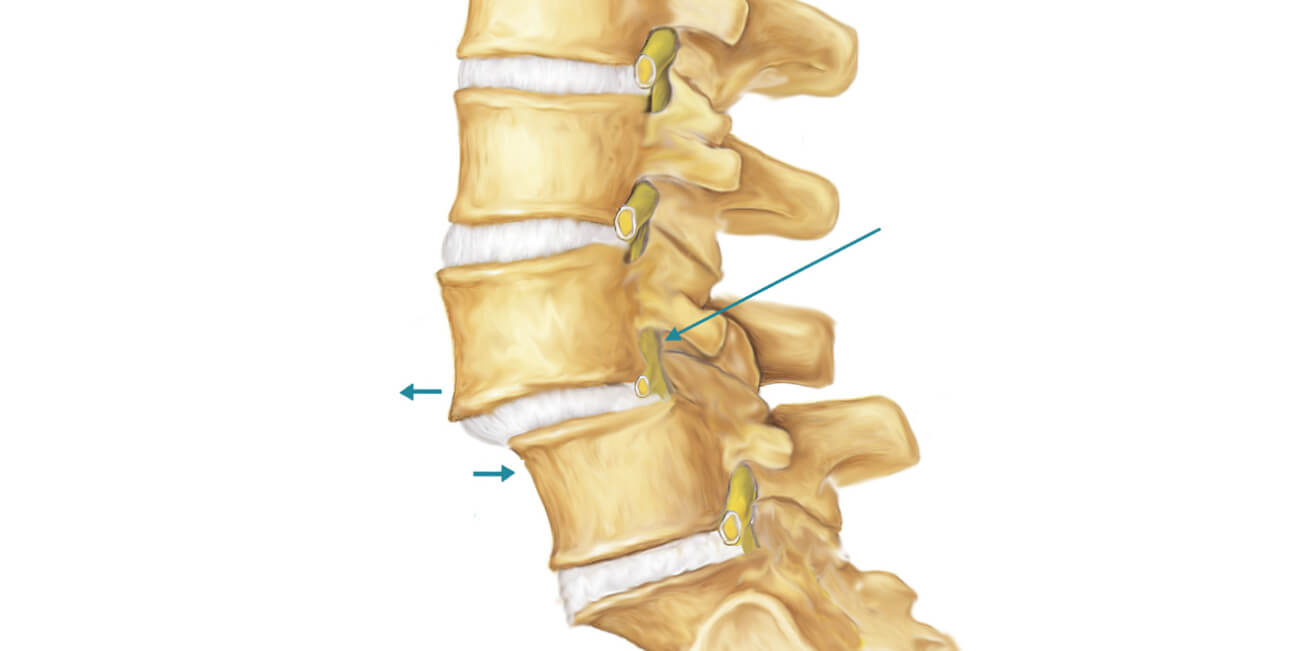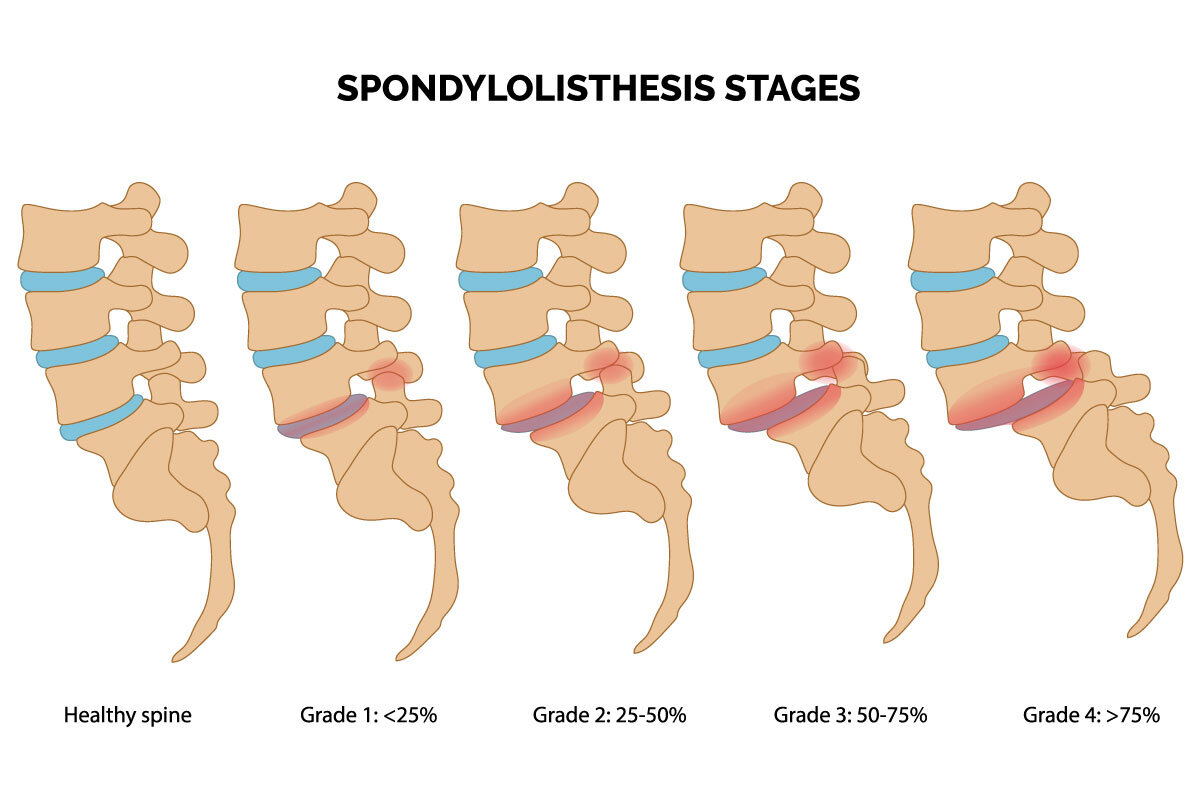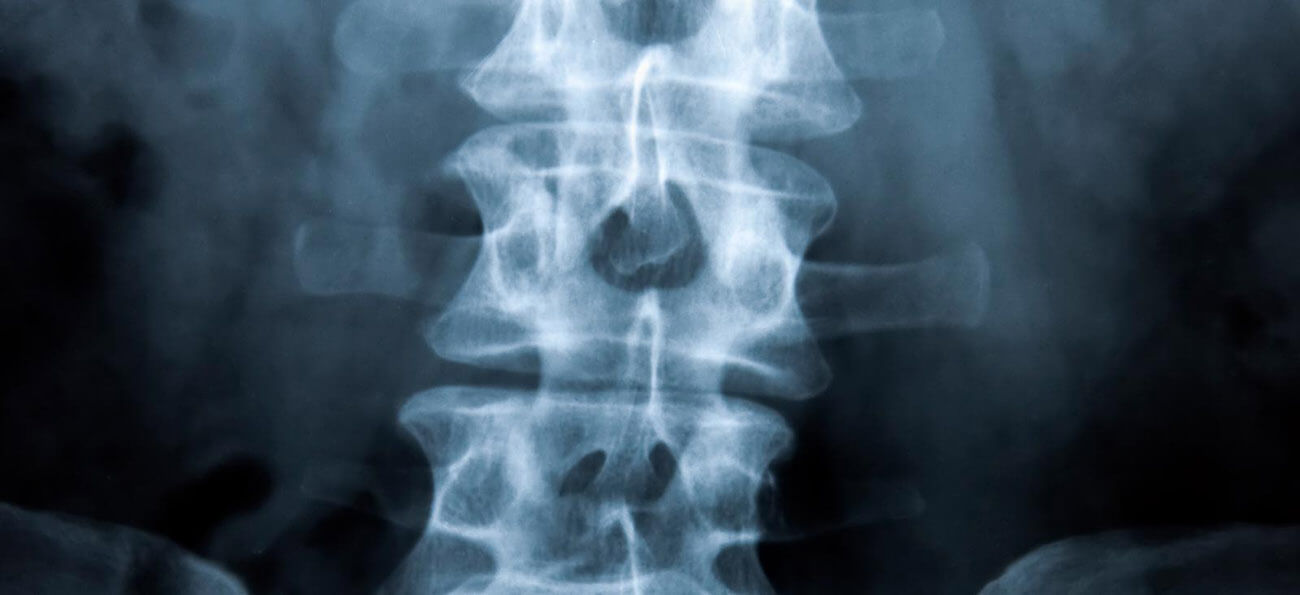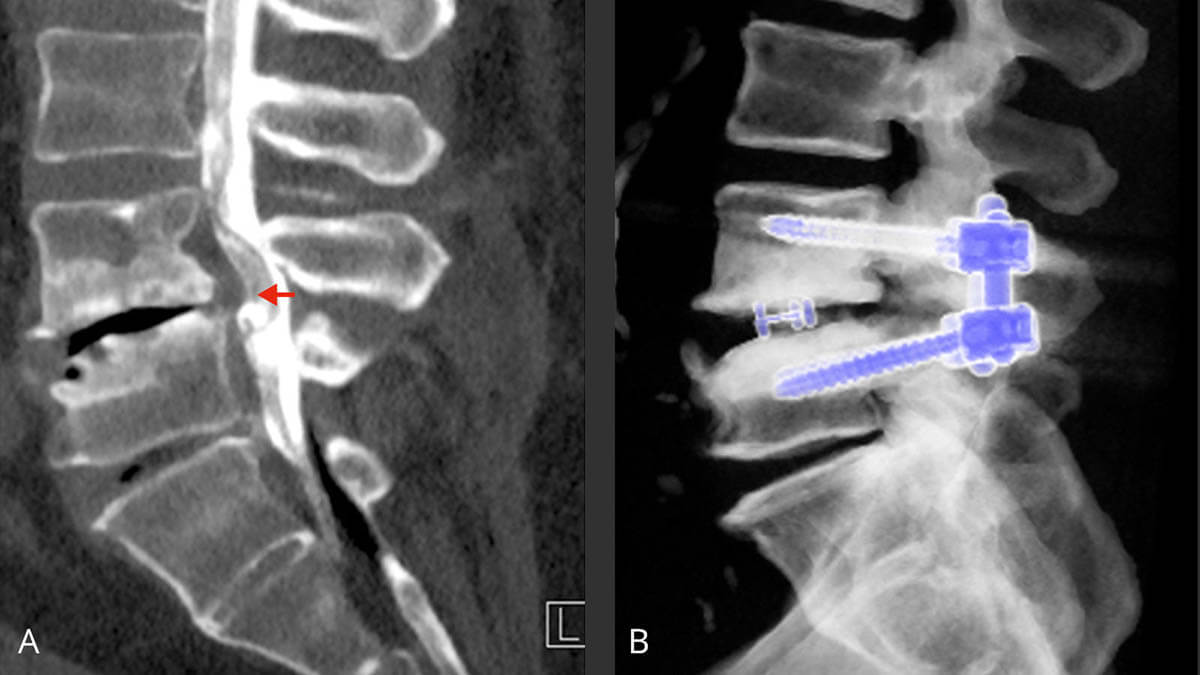Calls for Ukraine
Calls for Europe
Calls for USA

Spondylolisthesis (listhesis) is a pathological condition characterized by displacement (or so-called slippage) of one vertebra relative to another. In turn, this can impair the functioning of the nervous system, lead to spinal stenosis, and put pressure on the nerve roots.
According to statistics, this pathology is present in 5-6% of the planet’s population. Such displacement of the vertebrae can occur in different parts of the spine and can lead to severe pain and limited mobility of the spine, which significantly reduces a person’s quality of life. However, modern medicine offers methods for effective treatment of spondylolisthesis: conservative and surgical.
The MedTour platform cooperates with leading neurosurgical centers from different countries and will help you find a good clinic and experienced specialists involved in the treatment of spondylolisthesis.
This pathological condition can occur for various reasons. Among the most common are the following:
Most often, spondylolisthesis is diagnosed with congenital changes in the structure of the vertebrae or after excessive stress on the spine (most often this is due to work characteristics).

The most characteristic symptoms of spondylolisthesis include back pain in the area of displacement of the vertebrae. In addition to pain with spondylolisthesis, other neurological signs occur, which may differ depending on the location of the pathological changes.
The most characteristic symptoms of spondylolisthesis include pain in the back, in the area of displacement of the vertebrae. In addition to pain, other neurological signs occur, which may differ depending on the location of the pathological changes.
Displacement of the cervical vertebrae can provoke pain in the neck, dizziness, fainting, neuralgia, and ear pain. Listhesis of the cervical spine can also provoke the appearance of ENT diseases.
Displacement of the thoracic vertebrae, in addition to chest pain, can provoke shortness of breath, problems with the respiratory system, circulatory and heart problems, and gastrointestinal diseases.
Symptoms of lumbar vertebral displacement include discomfort in the lower back, muscle weakness and pain in the legs, numbness and decreased sensitivity in the legs. Also, listhesis of the lumbar spine can provoke stool disorders, cramps in the leg muscles, and paresthesia in the lower extremities.
Pain with spondylolisthesis can vary in severity. This is usually a dull, stabbing pain. This pathology is characterized by pain that intensifies with physical activity and stress on the spine, with flexion and extension of the spine, and also when a person is in one position for a long time. Periodic pain in the arms or legs and muscle spasms may also occur. In some cases, acute pain syndrome is observed.
Any pain is a signal of disturbances in the body. Therefore, if regular, often recurring pain appears, it is necessary to consult a doctor and undergo an examination.
Doctors distinguish listhesis of the cervical, thoracic and lumbar spine, depending on in which part of the spine the displacement occurs. The most common is listhesis of the lumbar spine, which is associated with increased physical stress on the spine and incorrect posture. Dislocations of the cervical vertebrae are less common. In the thoracic region, such pathological changes are quite rare.
Doctors distinguish the following types of spondylolisthesis, taking into account the direction in which the vertebrae slip:
According to the causes of occurrence, spondylolisthesis is divided into:

Doctors distinguish five degrees of spondylolisthesis:
In order to determine what degree of vertebral displacement is present, it is necessary to undergo an examination.

In order to detect listhesis, it is necessary to take an x-ray of the spine in direct and lateral projection. An X-ray may also be taken during flexion and extension of the spine, and rotation of the body. In addition, computed tomography or magnetic resonance imaging may be prescribed to make an accurate diagnosis.
Doctors choose treatment tactics for spondylolisthesis after making an accurate diagnosis, determining the location of the vertebral displacement, the stage of the disease and assessing the condition of nearby tissues and joints.
If spondylolisthesis is diagnosed, doctors recommend avoiding certain types of stress. It is not recommended to lift weights, make jerking movements, or sharply turn the body. Exercises to hyperextend the spine, such as the “bridge,” are prohibited.
Also, in the presence of this pathology, discomfort and pain in the spine cannot be ignored. If symptoms increase over time, this may indicate a worsening situation. This means that it is necessary to go to the doctor and select the appropriate treatment.
The choice of treatment method for vertebral displacement depends primarily on the stage of the disease. With slight displacement, conservative therapy is most often used. In such cases, as a rule, an integrated approach is used, which includes the following:
If conservative therapy does not produce results, the pain intensifies and there is limited mobility of the spine, surgical treatment is recommended. Surgery is also required if the vertebral displacement reaches 75%. In this case, emergency surgery is necessary, as there is a risk of damage to the spinal cord.

Surgical treatment of listhesis includes various operations. The most common surgical method is spinal fusion. During the operation, the doctor returns the displaced vertebrae to their normal position. After which they are fastened using a special stabilizing system. During the operation, a bone implant is used, which can be from a donor, but more often bone tissue from the patient’s pelvic area is used as an implant. Synthetic materials can also be used. The vertebrae are fixed using special metal plates or screws that hold the vertebrae in the desired position.
Specialists can also use robotic surgical systems when performing listhesis surgery. Thus, neurosurgeons can carry out all actions with maximum precision and minimal trauma to healthy tissue. Such surgical interventions provide high effectiveness and minimal risk of complications.

For cervical spine listhesis, the same types of therapy are used as for lumbar displacement. At stages 1-2, conservative treatment is carried out, which in most cases gives positive results and makes it possible to get rid of pain. Severe displacement of the vertebrae requires surgery.
Surgical intervention in this area of the spine is particularly responsible and requires maximum care and a high level of competence from a surgeon. Therefore, it is important to find a neurosurgeon who has extensive experience in performing such operations.
The prognosis for a diagnosis of spondylolisthesis is good in most cases. In the early stages, the condition can be treated quite well with conservative methods. In the later stages, with a competently performed operation, in most cases it is also possible to achieve good results, get rid of pain and minimize other symptoms. But in order for the treatment to be successful, it is important to contact good specialists.
MedTour will help you find a clinic and a doctor who will help eliminate problems with the spine and restore normal well-being.
The MedTour platform cooperates with the best medical centers and neurosurgery departments of leading clinics around the world. We will help you get to clinics that use the most advanced methods, have the latest equipment and employ world-famous specialists.
Are you looking for an opportunity to get treatment at a medical center in Turkey, Italy, Germany, Israel, South Korea and other countries, but don’t know how to do it? Contact us! The MedTour coordinator will provide you with free detailed information about clinics that specialize in the treatment of listhesis, advise on prices for their services and answer all your questions.
Neurologists and vertebrologists treat spondylolisthesis; if surgery is necessary, you need a neurosurgeon.
If you want to contact the best specialists who work in this direction, write or call us. We will help you choose a doctor who best suits your needs and medical indications and has all the necessary skills and competencies. The MedTour coordinator will help you make the right choice.
Please rate the work of MedTour
